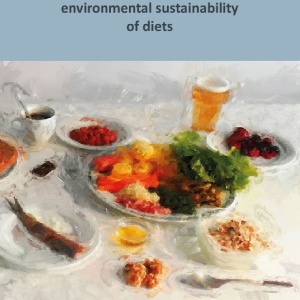
FCRN member Corné van Dooren defended his PhD thesis at VU University Amsterdam on 20 March 2018 on the topic of optimising both nutritional quality and environmental sustainability of diets.
His main conclusions were:
- Greenhouse gas emissions and land use appear to be applicable and representative indicators of the environmental sustainability of diets. An additional indicator reflecting nitrogen and phosphorus cycles is urgently needed.
- Current focus is on negative health effects of nutritional quality: sodium, saturated fats and added sugars. Positively, plant proteins, essential fatty acids and dietary fibre are indicators of high nutritional quality.
- Linear programming is an effective tool for simultaneously optimising the nutritional quality and environmental sustainability of diets, taking affordability and cultural acceptability into account.
- An optimised, traditional Low Lands diet is as healthy as a traditional Mediterranean diet, but the former is more sustainable than the Mediterranean and the New Nordic diet.
- A sustainable diet is not necessarily more expensive. A healthy, sustainable weekly shopping basket for a two-person household can be filled for less than € 40 per week.
- Environmental sustainability can be connected to nutritional quality at diet and product levels. This synergy is described by the Sustainable Nutrient-Rich Foods (SNRF) index based on 7 nutritional quality indicators.
- The SNRF index assists rating foods into 4 groups: red; SNRF <–1, white; –1 to 0, brown; 0 to 1 and green; >1, ranging from products rich in sodium, saturated fats or sugars to low energy-dense, high nutrient-dense plant products.
- For a healthy diet, comparing the environmental impacts of products by using nutrient density as a functional unit (defined as Nutrient Density Unit) is a more practicable approach than using kg or kcal as units.
- Opportunities for improving both health and sustainability scores of different population subgroups lie primarily in the reduction of meat consumption and total metabolic energy (over)consumption.
- Four strategies could support population subgroups to eat both healthily & sustainably:
- Replacing snacks with fruit
- Replacing cheese with vegetables
- Partly replacing meat with fish
- Decreasing alcoholic drinks.
- The insights from this thesis can help consumers make informed food choices and contribute to the development of future dietary guidelines considering both nutritional quality & environmental sustainability

Reference
Dooren, C. V. (2018). Simultaneous optimisation of the nutritional quality and environmental sustainability of diets.
You can access the full text of the thesis here. See also the Foodsource resource What is a healthy sustainable eating pattern?
To submit your own research to be included in Fodder, fill in our form here.







Post a new comment »